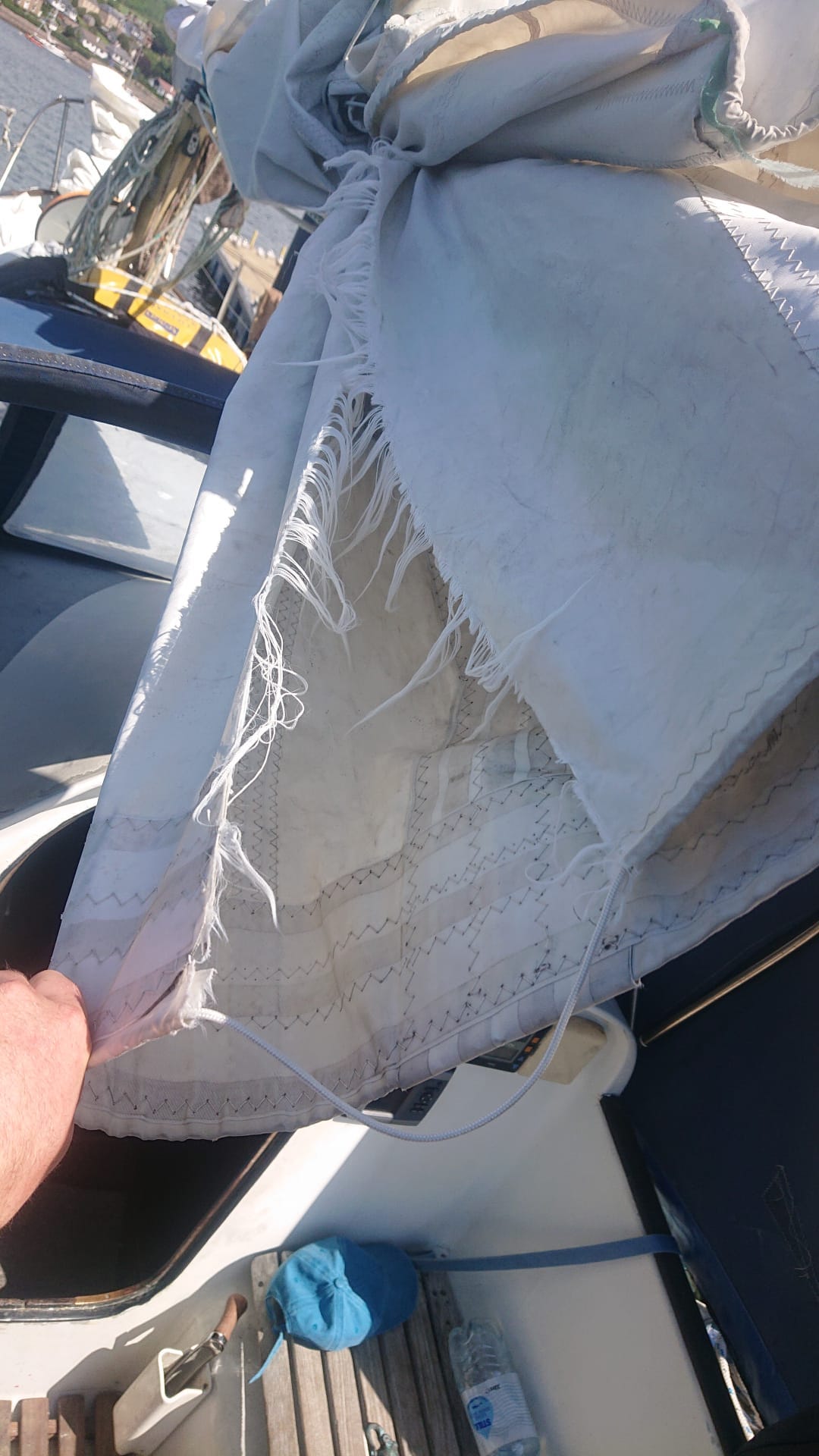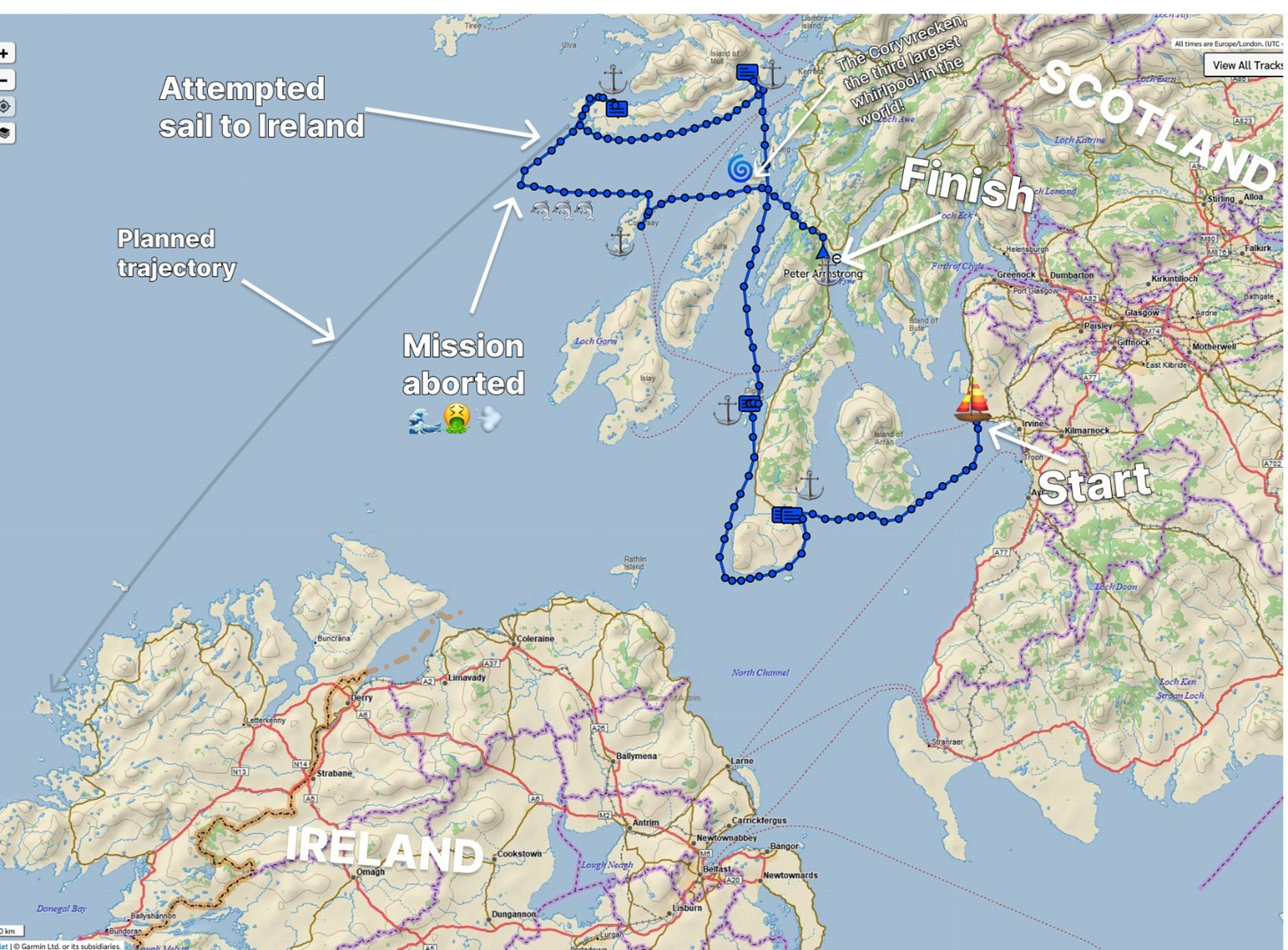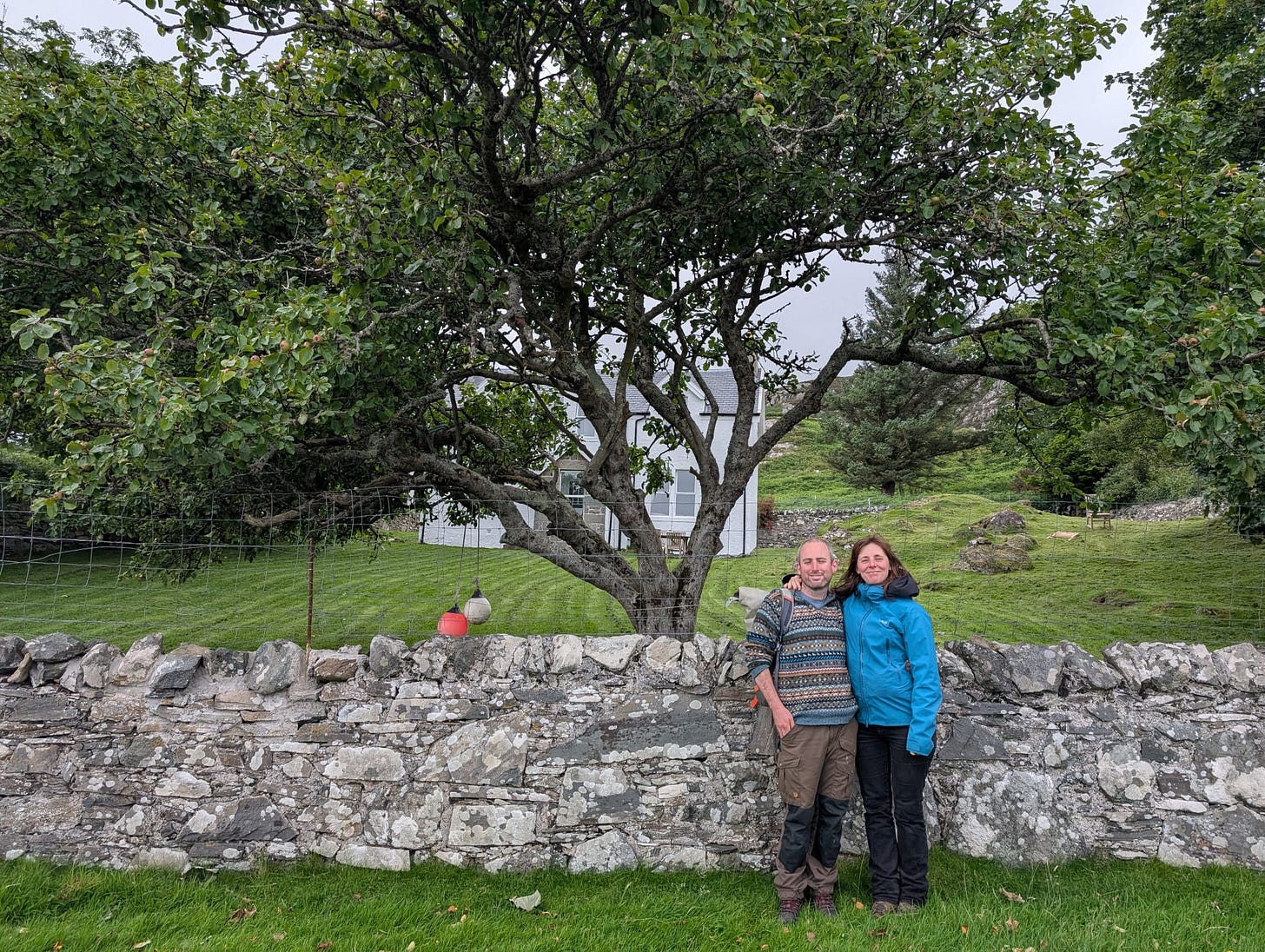Early July is for sailing. The last four years I've had time off to spend significant time on boats - first joining a crew for a few days with two older British gentlemen, then with my own boat to Shetland, next with my own boat back from Shetland.
This year, the plan was the first longer cruise with Éadáil; to shake out any remaining problems and get a real sense of how the boat works for coastal cruising with multiple people on board and see what it needs to really get it set up the way I want.
The plan was to get around the Mull of Kintyre to Gigha, then up for a party on the Ross of Mull. Then I wanted to sail to Ireland, to bring the boat home to Sligo to sail with the crew of nieces, nephew, sisters, uncles, cousins and my father, all who have been following the story of this new boat.
In the end it didn't quite go to plan. A combination of difficult weather, equipment failure and new boat nerves clipped our plans, but that didn’t mean the trip was overall a disappointment by any means.
The omens were there from the start of the trip. I’ve been having engine issues with this boat since day one, and these problems have persisted. The day before planned departure, I realised the alternator wasn’t charging the batteries. Fortunately, the local autofactor in Ardrossan had the spare parts I needed and I had the brushes replaced in no time.


The next holdup was a traffic jam on the motorway between Dublin and Belfast - meaning one of the crew missed her ferry to Scotland. Thankfully, she persevered, got the next ferry and we set off on the Monday for Campbeltown.
The next setback was with the mainsail. The route from Ardrossan around the Mull of Kintyre was quite upwind and I wanted to tweak the boat to see what performance we could get out of her. I was tightening the outhaul to try to flatten the sail shape when it ripped, badly, from the leech (back of the sail) to about half way in.
Thankfully the rip was below the first reefing point, meaning we could just make the sail a little smaller and hide the ripped portion. After Campbeltown, the trip around the Mull went fine, and the rest day in Gigha was glorious.
We sailed on north from Gigha, catching the tides correctly this year, and made really good progress. The following day forecast was dreadful, so we made for a cosy anchorage in Loch Spelve, south east side of Mull.
Speed vs Comfort
The new boat isn’t as fast as I thought it would be. The speed of a boat is limited by the length of the boat, and at 10 feet longer overall than the last boat, I thought we would be sailing significantly faster this year. The dimension that really matters is the waterline length - the length of the part of the boat that’s actually in the water - and here we were only 6 feet longer. Add to that the older sails, a large, draggy propeller, and unfamiliarity with how to get the best from the boat, we don’t sail as fast as I hoped.
However, the larger boat makes a huge difference when not sailing. There is so much more space on this boat than there was on the Contessa 26. We spent 36 hours cooped up on anchor in Loch Spelve. Doing that on hy-breasil would have been really, really rough. Éadáil's 11m x 3m is still a small space to spend two weeks with two other people, but having full standing room in much of the boat, a decent dinner table, toilet with a door and a decent galley space makes a huge difference.
After Loch Spelve, we motored around the Ross of Mull in a heavy sea to the Sound of Iona. There we got the sails up for a blast into Bunessan for a night in another beautiful anchorage, hot showers and great hospitality from Archipelago Folkschool.
Overall the boat handled the heavy seas just fine; I'm not worried that anything major is likely to break. The biggest issue is a whole range of small leaks - from the decks, chainplates, windows and hatches - that appear when waves start washing over the deck. None of them are particularly worrisome or unusual on a boat like this, but combined together they mean everything stored in lockers on the boat gets wet. It's a real quality of life issue, when it's so damp inside and outside it can be hard to enjoy the time on board.
Turning for home
We had big plans from Mull. Straight to Arranmore off the Donegal coast. The forecast looked ideal, a northwesterly wind in the mid to high teens, no significant swell. We planned to leave at 5pm on Sunday and arrive in time for a breakfast pint of Guinness back in Ireland.
It was not to be. After sailing though the Sound of Iona at full speed (7 knots), things were looking good. After Paul reefed the mainsail as small as it goes, I started making some modifications down below to make the accommodation more comfortable for sleeping en-route. With the wind direction putting us on a starboard tack, we thought it was the perfect chance to try out the bunk beds. I rigged some extra lines to prevent the bed from collapsing onto the person sleeping below, and jumped in for an early evening nap to test it out.
As I tried to doze, things picked up outside. I could hear the crew discussing all eventualities… what happens if… not a great sign. I had a micro dream where one of the sea cocks that I replaced a few months ago failed. The next moment Elaine was nervously telling me that there was actually quite a bit of water sloshing around in her bow cabin. Truly a dream come true. I put on a neutral face and went to investigate.
There wasn’t really anything wrong - the water had collected under the floorboards from the various small leaks over the previous few days and a blocked drain meant it didn’t drain to the deeper point of the bilge. I cleared it out and left the floorboard raised so we could monitor the situation. Then it was time to reduce sail further - with a fully reefed mainsail and the number 2 jib we were still massively overpowered, and the swell was really quite nasty. This was not what the forecast had indicated. I went forward to drag down the jib, and then it was time for a crew discussion.
Running for cover
I was already feeling seasick. I usually do ok but my time inside trying to sleep and unblocking drains left me ready to spew. I could see the rest of the crew weren’t far off it either. The forecast was wrong, we were in the middle of the Atlantic swell, and my confidence with the boat was shot. Leaving the lighthouse of Dubh Artach to starboard, led by a pod of dolphins, we ran, downwind for Colonsay.




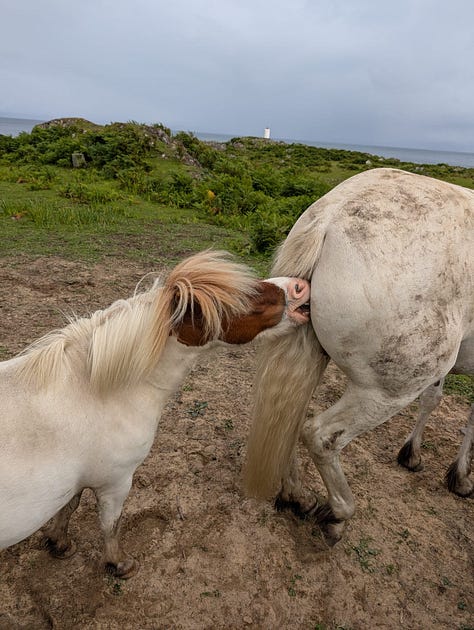

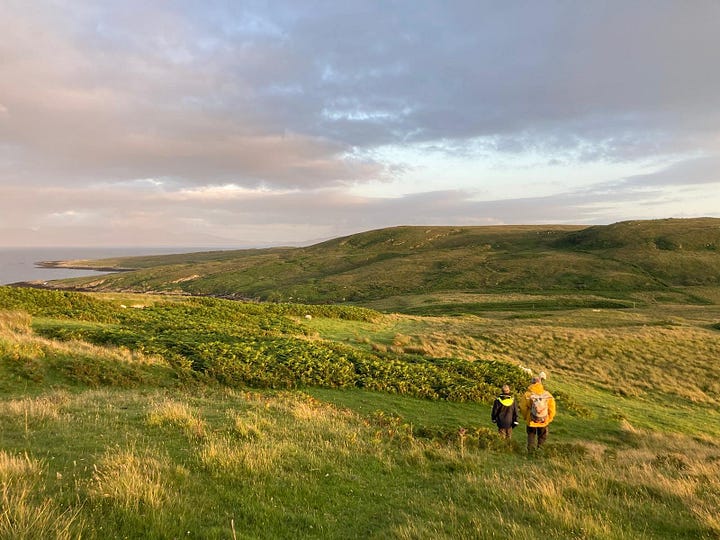
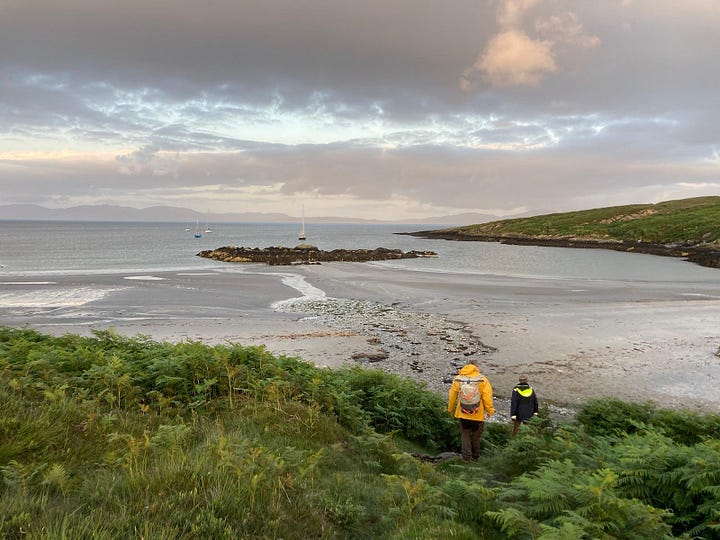
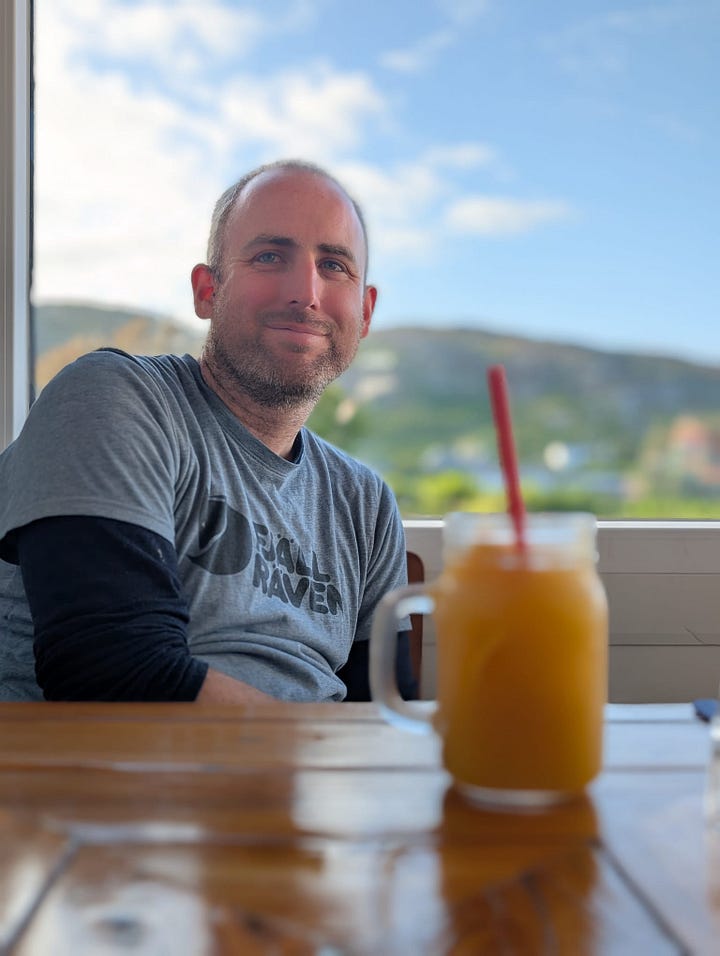
Change of plans
The trip to Ireland was a bust - forecast for the next few days didn’t look inspiring, and the crew needed to get home. I decided I didn’t want to dedicate my whole summer trying to sail to Sligo, only to have to sail back to Bute before August 12th to start my new job. We changed plans, headed back to the Clyde area through the mighty maelstrom of the Corryvreckan whirlpool (timed perfectly at slack tide) and via the Crinan canal, only delayed one night further with a broken exhaust pipe.

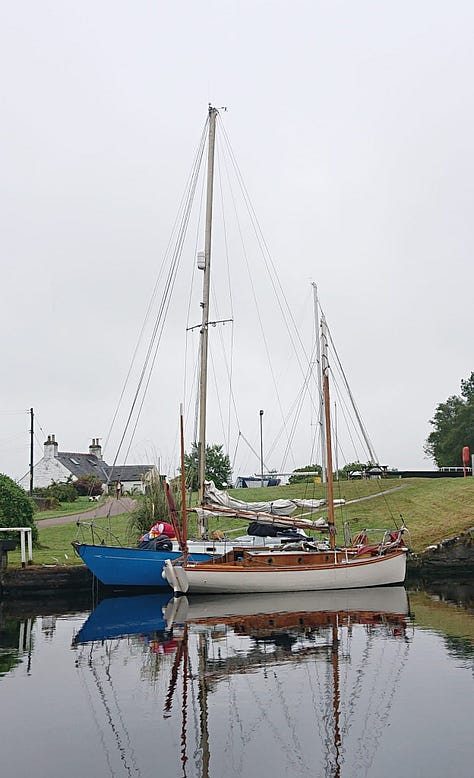


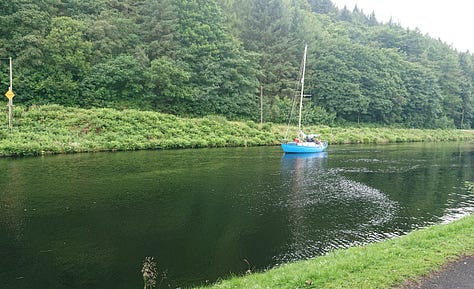
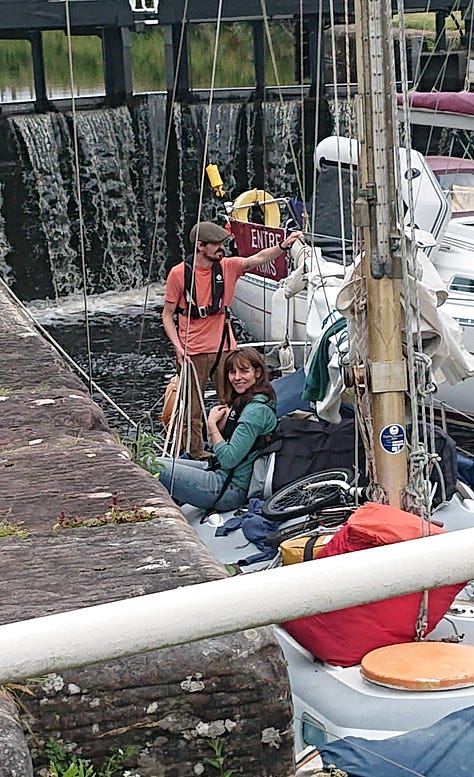
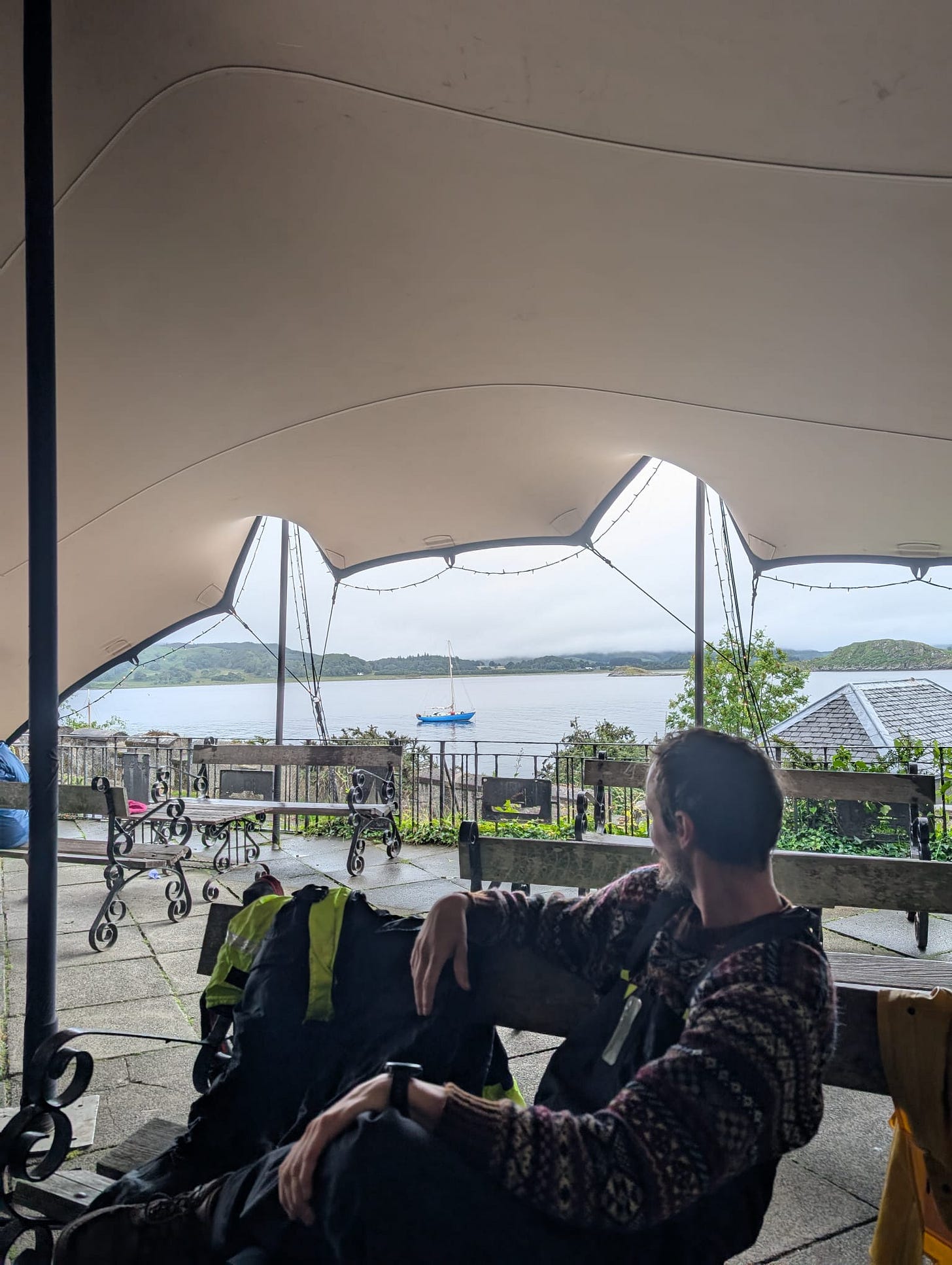
Next Steps
We left the boat at the end of the Crinan canal at Ardrishaig. I returned to Glasgow for a few days and the crew left for Ireland. The next step is to move her from Ardrishaig to Port Bannatyne on the island of Bute. That will be the new home for the boat for the next months as I start my new job in Rothesay. I’ll visit Ireland (the boring way, by plane or ferry), and then back to Scotland in early August. I’d like to fit in another short cruise before starting work on the 12th of August, so if you’re keen to sail, and not put off by my breakdown stories, get in touch.




